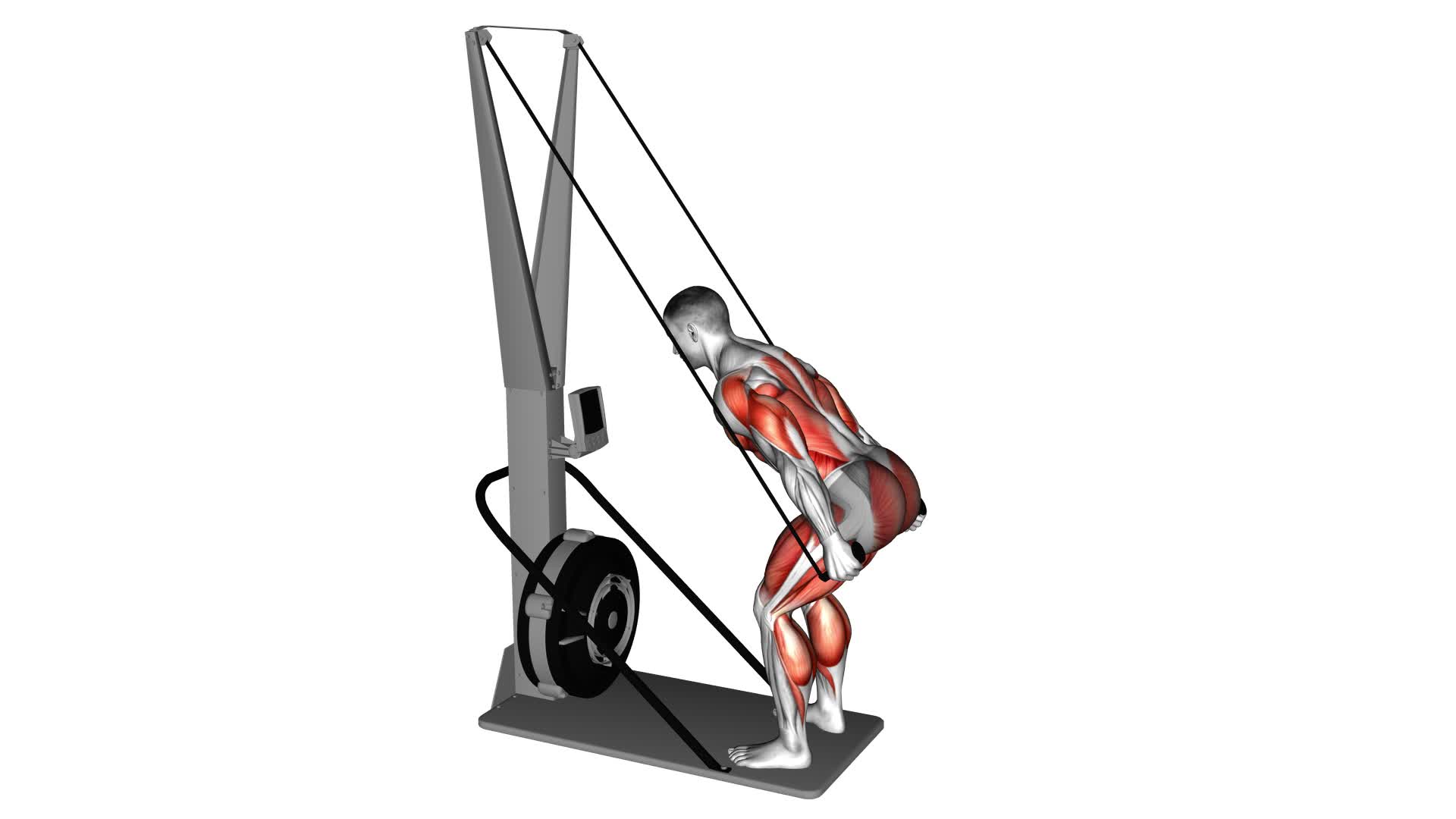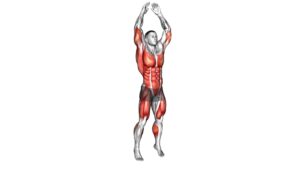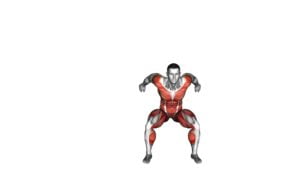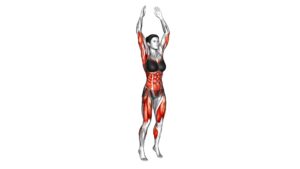Ski Ergometer – Video Exercise Guide & Tips

Get ready to take your workout to the next level with the Ski Ergometer.
Watch This Exercise Video
In this video exercise guide, we'll walk you through proper setup and form, beginner exercises, advanced techniques, and tips for improving endurance.
With the Ski Ergometer, you can incorporate a challenging and effective full-body workout into your routine.
So grab your gear and get ready to experience the power of the Ski Ergometer!
Key Takeaways
- Proper setup and form are crucial for a successful Ski Ergometer workout
- There are beginner and advanced exercises that can be done on the Ski Ergometer
- Improving endurance on the Ski Ergometer requires maintaining proper technique and gradually increasing intensity
- Incorporating the Ski Ergometer into your workout routine can have numerous benefits, including improved cardiovascular fitness and a full-body workout
Proper Setup and Form
How can you set up the Ski Ergometer properly and maintain proper form? When using a Ski Ergometer, it's crucial to ensure that you set it up correctly and maintain proper form to maximize your workout and avoid injury. Proper setup and form are essential for reaping the benefits of the Ski Ergometer and achieving optimal results.
Firstly, make sure to adjust the footplates and handle position to fit your body. The footplates should be set at a comfortable distance apart, and the handles should be at a height that allows your arms to fully extend without straining. This will ensure that you can generate maximum power and engage the correct muscles during each stroke.
Maintaining proper form is also key. Avoid leaning too far forward or backward, as this can strain your back and compromise your technique. Keep your core engaged and your back straight throughout the workout. Additionally, make sure to push through your legs while initiating each stroke and engage your core and arms to follow through.
Common mistakes in Ski Ergometer form include hunching the shoulders, rounding the back, and not fully extending the arms during the recovery phase. By being mindful of these mistakes and practicing proper form, you can optimize your Ski Ergometer workout and achieve the desired results.
Beginner Ski Ergometer Exercises
Are you ready to learn some beginner Ski Ergometer exercises? The Ski Ergometer is a fantastic fitness tool that can help you improve your cardiovascular endurance, build upper and lower body strength, and enhance your overall fitness level. Whether you're new to the Ski Ergometer or just starting your fitness journey, here are three exercises to get you started:
- Double Pole: Begin by holding the handles with a wide grip and sitting back into a slight squat position. Use your arms to drive forward and back, mimicking the motion of double poling in cross-country skiing. Focus on engaging your core and maintaining good posture throughout the movement.
- Alternating Arm Pull: Start by gripping the handles with an overhand grip and standing tall. Pull one arm back while extending the other arm forward, alternating sides with each repetition. Keep your movements controlled and smooth, focusing on engaging your back muscles and maintaining a strong core.
- Legs Only: Sit on the Ski Ergometer with your feet securely strapped into the footplates. Place your hands on your hips and drive through your legs, extending and flexing your knees to generate power. This exercise is great for targeting your lower body muscles, especially your quadriceps and glutes.
Advanced Ski Ergometer Techniques
To continue exploring the potential of the Ski Ergometer, let's delve into advanced techniques that will challenge your fitness level and elevate your performance.
Advanced ski ergometer techniques are designed to push your limits and improve your overall strength, endurance, and power. One advanced technique is the double pole. This technique involves using both arms simultaneously to generate power and speed. To perform the double pole, start by gripping the handles with both hands and maintaining a strong core. Initiate the movement by driving your arms forward and downward, using your upper body strength to generate force. As you extend your arms, push off with your legs to engage your lower body.
Another advanced technique is the single-leg drill. This technique focuses on developing balance, stability, and unilateral strength. To perform the single-leg drill, lift one foot off the footrest and balance on the other leg. Use your core and upper body strength to drive the handles forward and pull them back, while maintaining stability on the single leg.
Advanced ski ergometer workouts incorporate these techniques and more to provide a challenging and effective full-body workout. By incorporating these advanced techniques into your ski ergometer routine, you can take your fitness level to new heights and achieve your performance goals.
Tips for Improving Endurance on the Ski Ergometer
To further enhance your performance on the Ski Ergometer and continue challenging your fitness level, here are some tips to help you improve your endurance:
- Maintain Proper Technique: Proper technique is essential for improving speed on the ski ergometer and preventing injuries. Focus on engaging your core, driving through your legs, and using your arms efficiently. Keep your back straight and avoid hunching over.
- Gradually Increase Intensity: To build endurance, it's important to gradually increase the intensity of your workouts. Start with shorter sessions and gradually add more time as your endurance improves. You can also increase the resistance on the ski ergometer to make your workouts more challenging.
- Incorporate Interval Training: Interval training is a great way to improve endurance on the ski ergometer. Alternate between high-intensity bursts of speed and lower-intensity recovery periods. This will help improve your cardiovascular fitness and increase your endurance over time.
By following these tips, you can improve your endurance on the ski ergometer and take your performance to the next level. Remember to listen to your body and take breaks as needed to prevent injuries.
Happy skiing!
Incorporating the Ski Ergometer Into Your Workout Routine
How can you effectively incorporate the Ski Ergometer into your workout routine?
The Ski Ergometer is a versatile piece of equipment that can help you improve your functional fitness and cardiovascular conditioning. To effectively incorporate it into your routine, start by setting specific goals for your workouts. Determine how many days a week you'll use the Ski Ergometer and for how long. It's recommended to start with shorter sessions and gradually increase the duration as you build endurance.
When using the Ski Ergometer, focus on maintaining proper form. Keep your arms straight, engage your core, and use your legs to drive the movement. This will ensure that you're engaging the correct muscles and maximizing the benefits of each stroke. Consider incorporating interval training into your Ski Ergometer workouts. Alternate between high-intensity intervals and periods of active recovery. This will help improve your cardiovascular fitness and increase your calorie burn.
Additionally, try incorporating other exercises into your routine that complement the Ski Ergometer. This can include strength training exercises such as squats, lunges, and deadlifts, which will help improve your overall athletic performance.
Remember to listen to your body and rest when needed. Incorporating the Ski Ergometer into your workout routine can be a great way to enhance your functional fitness and cardiovascular conditioning. Stay consistent, challenge yourself, and enjoy the benefits of this effective piece of equipment.
Frequently Asked Questions
What Are the Benefits of Using a Ski Ergometer Compared to Other Cardio Machines?
Using a ski ergometer has several benefits and advantages over other cardio machines. It provides a full-body workout, engaging your arms, core, and legs simultaneously. This helps improve your cardiovascular fitness, strength, and endurance.
The ski ergometer also allows you to adjust the resistance, making it suitable for all fitness levels. Additionally, it provides a low-impact workout, reducing stress on your joints.
Can I Use the Ski Ergometer if I Have a Previous Knee Injury?
You may be wondering if you can use the ski ergometer if you have a previous knee injury. Using a ski ergometer can actually be beneficial for knee recovery. The low-impact nature of the exercise puts less stress on your joints compared to other cardio machines.
However, it's important to consult with a medical professional or physical therapist before starting any new exercise program, especially if you have a previous knee injury. They can provide personalized advice and guidance to ensure your safety and progress.
How Often Should I Use the Ski Ergometer to See Results?
To see results from using the ski ergometer, it's important to determine the optimal workout schedule. The frequency of ski ergometer use will depend on your fitness level and goals.
It's generally recommended to incorporate the ski ergometer into your exercise routine at least 2-3 times a week. This will allow your body to adapt and improve over time.
Consistency is key, so find a schedule that works for you and stick to it!
Can I Use the Ski Ergometer for Weight Loss?
Yes, you can definitely use the ski ergometer for weight loss.
The ski ergometer is a great tool for burning calories and increasing your cardiovascular endurance.
By incorporating the ski ergometer into your HIIT workouts, you can create a high-intensity workout that will help you burn fat and lose weight.
Additionally, using the ski ergometer for muscle building will also contribute to weight loss, as muscle burns more calories than fat.
Are There Any Specific Warm-Up Exercises I Should Do Before Using the Ski Ergometer?
Before using the ski ergometer, it's important to do specific warm-up exercises to prevent injuries.
Warm-up exercises like jumping jacks, high knees, and arm circles can help increase blood flow and loosen up your muscles.
These exercises prepare your body for the intensity of the ski ergometer workout and reduce the risk of strains or pulls.
Taking a few minutes to warm up can greatly improve your performance and keep you safe during your ski ergometer session.
Conclusion
In conclusion, the ski ergometer is a versatile and effective piece of exercise equipment that can help improve endurance and strengthen various muscle groups.
By following proper setup and form, beginners can start with basic exercises and gradually progress to advanced techniques.
Incorporating the ski ergometer into your workout routine can add variety and challenge to your fitness regimen.
With consistent practice and dedication, you can enhance your overall fitness and achieve your exercise goals.

Author
Years ago, the spark of my life’s passion ignited in my mind the moment I stepped into the local gym for the first time. The inaugural bead of perspiration, the initial endeavor, the very first surge of endorphins, and a sense of pride that washed over me post-workout marked the beginning of my deep-seated interest in strength sports, fitness, and sports nutrition. This very curiosity blossomed rapidly into a profound fascination, propelling me to earn a Master’s degree in Physical Education from the Academy of Physical Education in Krakow, followed by a Sports Manager diploma from the Jagiellonian University. My journey of growth led me to gain more specialized qualifications, such as being a certified personal trainer with a focus on sports dietetics, a lifeguard, and an instructor for wellness and corrective gymnastics. Theoretical knowledge paired seamlessly with practical experience, reinforcing my belief that the transformation of individuals under my guidance was also a reflection of my personal growth. This belief holds true even today. Each day, I strive to push the boundaries and explore new realms. These realms gently elevate me to greater heights. The unique combination of passion for my field and the continuous quest for growth fuels my drive to break new ground.



